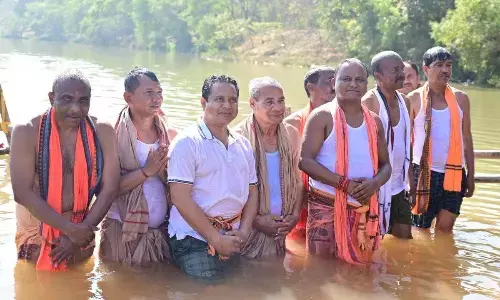Kalidasa

Kalidasa. Kalidasa is the greatest poet and dramatist that ever lived in India.
Kalidasa is the greatest poet and dramatist that ever lived in India.
His works have enjoyed a high reputation and popularity in all climes and times after him.
.jpg)
An Indian poet says: when they started counting Sanskrit poets, they counted Kalidasa first on the little finger. Try however much, they could not think of another to be reckoned on the ring finger; because of it, the ring finger came to be called as anamika or the unnamed!
Tradition holds that he was one of the nine gems in the court of Vikramaditya. The others were Dhanvantari, Kshapanaka, Amarasimha, Sanku, Vetala Bhatta, Ghatakarpara, Varahamihira and Vararuchi.
According to modern historians, Kalidasa lived in Ujjain near about 450 AD in the court of Chandragupta II who was also known as Vikramaditya. ‘We have no definite knowledge of his life except what the legends say.
His best known work is ‘Abijnana Shakuntalam’ or ‘Shakuntala’ for short. It is one of the best plays in the literature of the whole world. Goethe the German poet wrote of it:
Would’nt then the Earth and Heaven itself in one sole name combine?
I name thee, Oh Sakuntala! And all at once is said.
The story runs like this: King Dushyanta met Shakuntala the foster daughter of Rishi Kanva in the forest. He fell in love with her and married her. Giving her his ring, he went back to his capital promising to send for her.
Shakuntala was cursed by sage Durvasa for failing to greet him. As a result, Dushyanta completely forgot her.
Kanva sent her to Dushyanta but on the way she lost the ring he gave and the king did not recollect her.
Time passed. A fisherman found the ring in the belly of a fish he caught, seeing which Dushyanta recollected her.
Later, while driving in Indra’s chariot, he chanced to meet Bharata, his son and later, Shakuntala.
Two other dramas of his are famous. They are ‘Malavikagnimitra’, a court comedy, and ‘Vikramorvaseeya’, a fairy tale of love between a celestial nymph and a mortal.
Kalidasa is equally famous for his epic ‘Raghuvamsa’. It is a mahakavya in 19 cantos, narrating the history of the kings of the Solar race from Dilipa the first.
Dilipa was childless. On the advice of sage Vasishta, he worshipped the divine cow Surabhi because of its curse, by serving Nandini, her off—spring. When a lion pounced on Nandini, Dilipa offered himself as prey in exchange. This pleased the divine cow and Dilipa was blessed with a son Aja.
Raghu’s exploits are described.
We read of Aja and his queen lndumati. Here occurs the famous passage ‘Aja Vilapa’ at the death of his queen. Sri Rama’s story is beautifully told. The epic ends with ‘Agnimitra’.
The other poetical works of his are ‘Kumara Sambhava’, ‘Ritu Samhara’ and ‘Megha Sandesha’.
The first is an epic poem in 18 cantos describing the birth and life of Skanda or Kartik — Siva’s son. The second describes the seasons and the third is a lyrical poem describing the pangs of love of a yaksha towards his beloved from whom he was separated by a curse. These are universally regarded as gems of Sanskrit poetry.
Several writers have commented on Kalidasa’s works, the foremost among them being ‘Mallinatha’. Kalidasa stands unsurpassed and unrivalled both in drama and poetry. You must read them in the original when you grow older.















